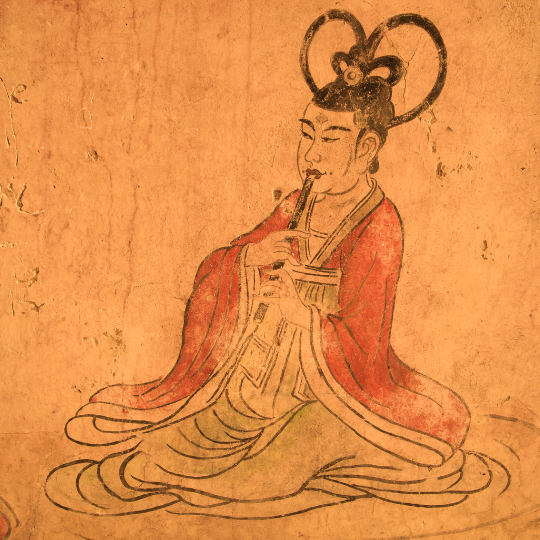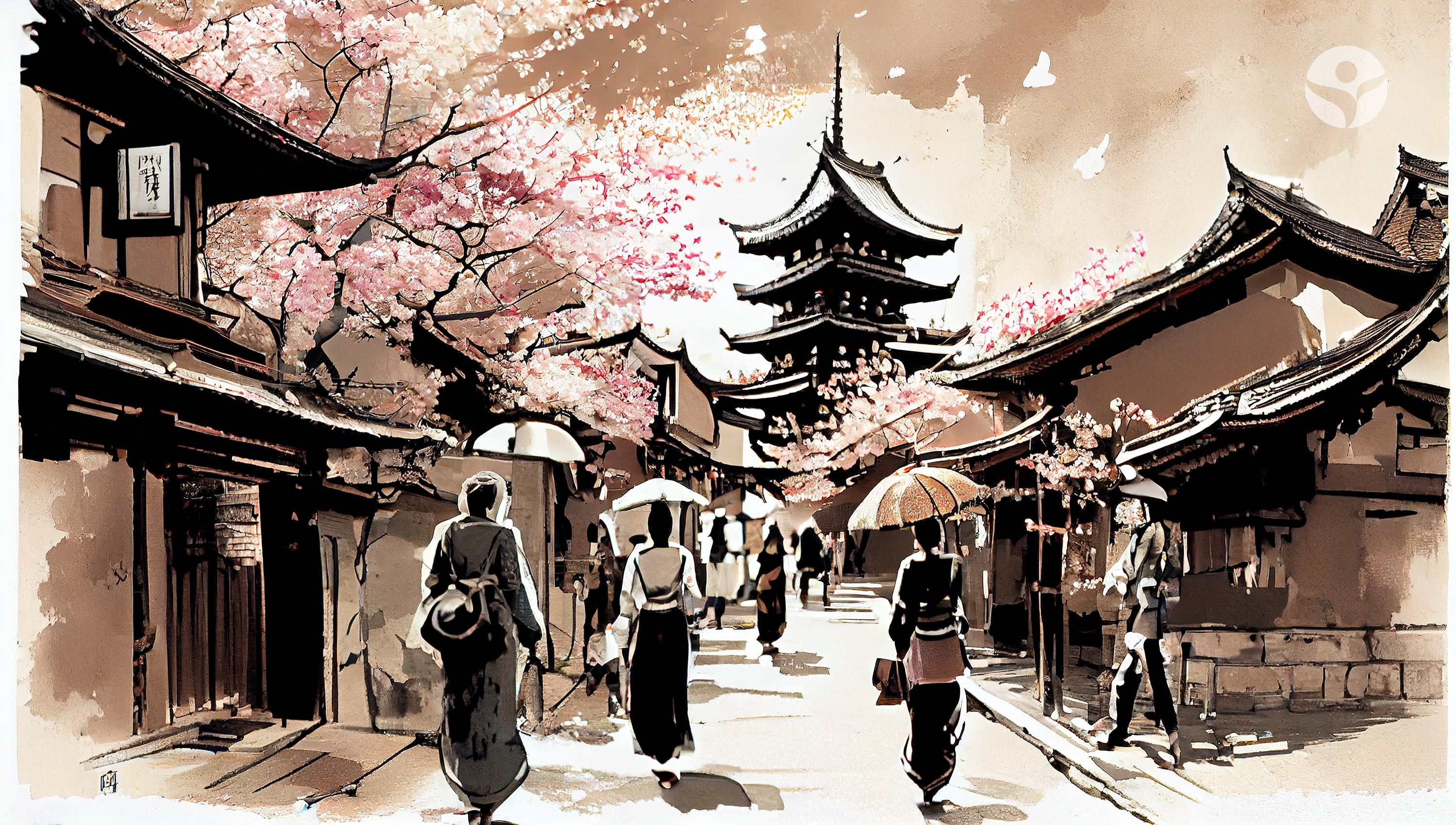Die Herkunft von Matcha: Von China nach Japan

Die Ursprünge von Matcha lassen sich bis in die Zeit zurückverfolgen, in der… Tang-Dynastie In China wurde die Teeverarbeitung vom 7. bis zum 10. Jahrhundert praktiziert. Teeblätter wurden gedämpft und zu Ziegeln geformt, um Transport und Handel zu erleichtern. Diese Methode wurde während der Song-Dynastie (10. bis 13. Jahrhundert) weiterentwickelt. In dieser Zeit entwickelte ein japanischer buddhistischer Mönch namens Eisai Ich habe in China studiert und die Zen-buddhistischen Methoden zur Zubereitung von pulverisiertem Grüntee erlernt.

Im Jahr 1191 kehrte Eisai endgültig nach Japan zurück und brachte Teesamen sowie das Wissen um die Zubereitung von Matcha mit. Die von ihm mitgebrachten Samen galten als die hochwertigsten Teeblätter in ganz Japan. Er pflanzte sie anschließend auf dem Tempelgelände in Kyoto, dem Sitz des Kamakura-Shoguns. Matcha wurde zu dieser Zeit jedoch nur in begrenzten Mengen produziert und galt als luxuriöses Statussymbol.
Geschichte der japanischen Teezeremonie

Im 16. Jahrhundert vereinte ein Zen-Schüler namens Murata Juko verschiedene, zuvor fragmentierte Elemente der Teezeremonie zu einem formalisierten Ritual, das den Anbau, den Konsum und die Zeremonie von Matcha umfasste. Zen-Meister Sen-no-Rikyu (千利) popularisierte dieses Ritual weiter und wurde zur bekanntesten und verehrtesten historischen Figur der japanischen Teezeremonie.
Sen no Rikyu studierte bei einigen der angesehensten Teemeister seiner Zeit. Er perfektionierte sein Handwerk im Daitoku-Tempel (大徳寺) in Kyoto.
Er war ein wahrer Anhänger des Wabi-Sabi-Stils. Er bevorzugte schlichte Teestuben gegenüber opulenter Ästhetik. Er entschied sich für japanisches Teegeschirr anstelle des chinesischen Stils. Er entwarf sogar einige Teeutensilien selbst.
Sen no Rikyu stieg in der Hierarchie auf. Da Tee ein wichtiges Statussymbol (und sogar ein politisches Handelsinstrument) war, wurde er von einflussreichen Feudalherren engagiert. 1585 bereitete Sen no Rikyu im Kaiserpalast Tee für den Kaiser selbst zu (Ōgimachi, '正親町天皇').
Sen-no-Rikyu legte die vier Grundprinzipien der japanischen Teezeremonie fest: Harmonie (wa), Respekt (kei), Reinheit (sei) und Ruhe (jaku). Diese Prinzipien bildeten das Fundament der japanischen Teezeremonie, auch bekannt als „Chanoyu“ – der Weg des Tees.

Chanoyu-Häuser
Die Kunst der Teezeremonie von Sen no Rikyu wurde über Generationen weitergegeben.
Er vererbte seine Schulen an seine beiden Söhne, Sen no Showan (1546 - 1614) und Sen no Soutan (1578 - 1658).
Sen no Soutan hatte drei Söhne, die die San Senke, die drei Hauptschulen der japanischen Teezeremonie, gründeten:
Mushanokoji Senke - (武者小路千家)
Omote Senke - (表千家)
Ura Senke - (裏千家)
Diese drei Schulen sind auch heute noch aktiv. Sie geben das Wissen über die Zubereitung und das Servieren von Tee an jede nachfolgende Generation weiter.
Matcha und die Samurai: Ein Symbol für Macht und Stärke


Matcha spielte auch im Leben der Samurai eine wichtige Rolle. Vor der Schlacht tranken sie Matcha, um wach und konzentriert zu bleiben. Das im Matcha enthaltene Koffein und die Aminosäure L-Theanin versorgten sie mit anhaltender Energie und geistiger Klarheit und verschafften ihnen so einen entscheidenden Vorteil auf dem Schlachtfeld.
Matcha-Shading: Eine Entdeckung, die den Geschmack verbesserte
Während der Kamakura-Zeit (1185–1333) wurde Matcha nur in extrem begrenzten Mengen produziert und galt als luxuriöses Statussymbol. Der Tee wurde aus Teepflanzen hergestellt, die in direktem Sonnenlicht wuchsen, was ihm einen herben und bitteren Geschmack verlieh.
Erst in der Azuchi-Momoyama-Zeit (1568–1600) wurde eine neue Methode zur Matcha-Zubereitung entdeckt. Dabei wurden die Teepflanzen einige Wochen vor der Ernte im Schatten angebaut. Dieses Verfahren, bekannt als „Ōishita Saibai“, führte zu einem süßeren und milderen Geschmack.

Durch die Beschattung von Matcha konnten Teebauern eine höhere Qualität erzielen und der Prozess wurde zu einem wichtigen Bestandteil der japanischen Teekultur. Die Beschattung maximiert die gesundheitlichen Vorteile von Matcha und erzeugt ein einzigartiges Geschmacksprofil, das von Teeliebhabern weltweit geschätzt wird.
Matcha in Ihre tägliche Routine integrieren
Matcha ist nicht nur ein köstliches und gesundes Getränk, sondern lässt sich auch vielseitig in der Küche verwenden, zum Beispiel in Smoothies, Matcha Lattes und Backwaren. Matcha-Pulver kann Joghurt oder Haferflocken (Porridge) beigemischt oder sogar als Gewürz für geröstetes Gemüse verwendet werden. Die Möglichkeiten sind schier unendlich, und die gesundheitlichen Vorteile von Matcha machen es zu einer idealen Ergänzung für jede Ernährungsweise.


